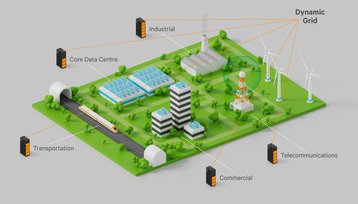Vertiv has started bundling software from Upside Energy with some of its products in the UK, enabling its uninterruptible power supplies (UPSs) to share their resources with the local grid, generating value for the owner.
Current and future Vertiv UPS customers will be able to share unused energy with the UK grid by opting into Upside's cloud-based Flexibility Platform. The demand-response system will allow the grid to respond to fluctuating demand without having to fire up extra fossil fuel-powered generating capacity - and the savings will be passed to the companies sharing their backup.
Data centers keep control
"We give people a dashboard where they can see what is happening with the UPS,” Graham Oakes, founder and chief scientist at Upside Energy, said in an interview for the October/November 2018 issue of DCD Magazine.
"The data center manager is in control," he added, stressing that participants can withdraw their UPS at any time.
Upside’s Virtual Energy Store platform can orchestrate over 100,000 devices in real time, monitoring UPS systems of customers who have opted in, feeding some energy from the battery storage into the grid, but leaving the emergency backup function unaltered, according to the announcement.
Upside started out in 2013, and began offering a service in 2015. Its inclusion with mainstream Vertiv products is a credibility win for the company, Oakes told us: “If you are a data center manager, and a small startup knocks on your door, asking to do clever stuff with your UPS, I guarantee they will say no. If Vertiv comes and says they are working with that startup, it gives them more confidence.”
As well as playing their part in improving the quality of the grid, Vertiv customers get revenue from their UPS systems, and the two companies promise the scheme will increase the reliability of the equipment, by continuously monitoring it and ensuring the performance of the batteries is optimized.
"While we are not energy producers, we can definitely help companies leverage UPS battery storage and cut energy costs," Emiliano Cevenini, vice president of commercial and industrial vertical markets for Vertiv in EMEA, said.
“The proliferation of distributed energy resources and a growing percentage of intermittent renewables in the grid is driving the requirement for more grid energy storage," added Pritil Gunjan, senior research analyst with Navigant Research, in a quote provided by Vertiv.

